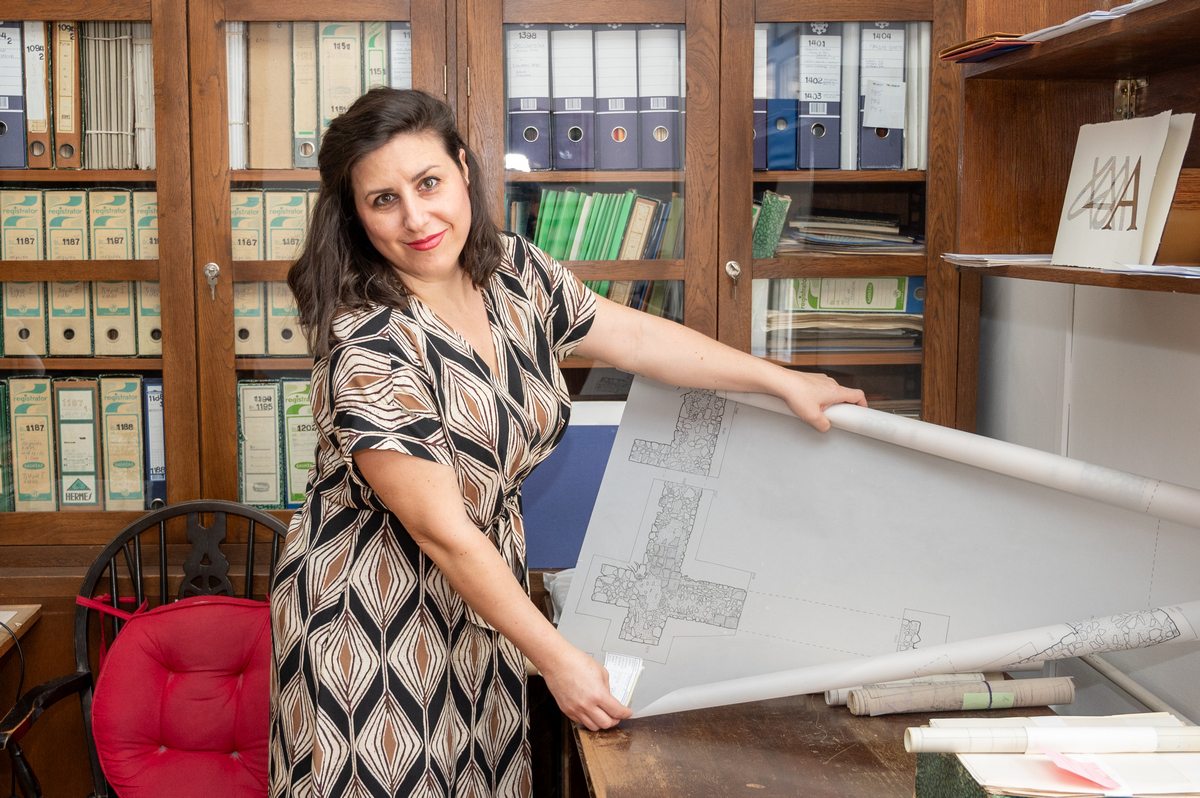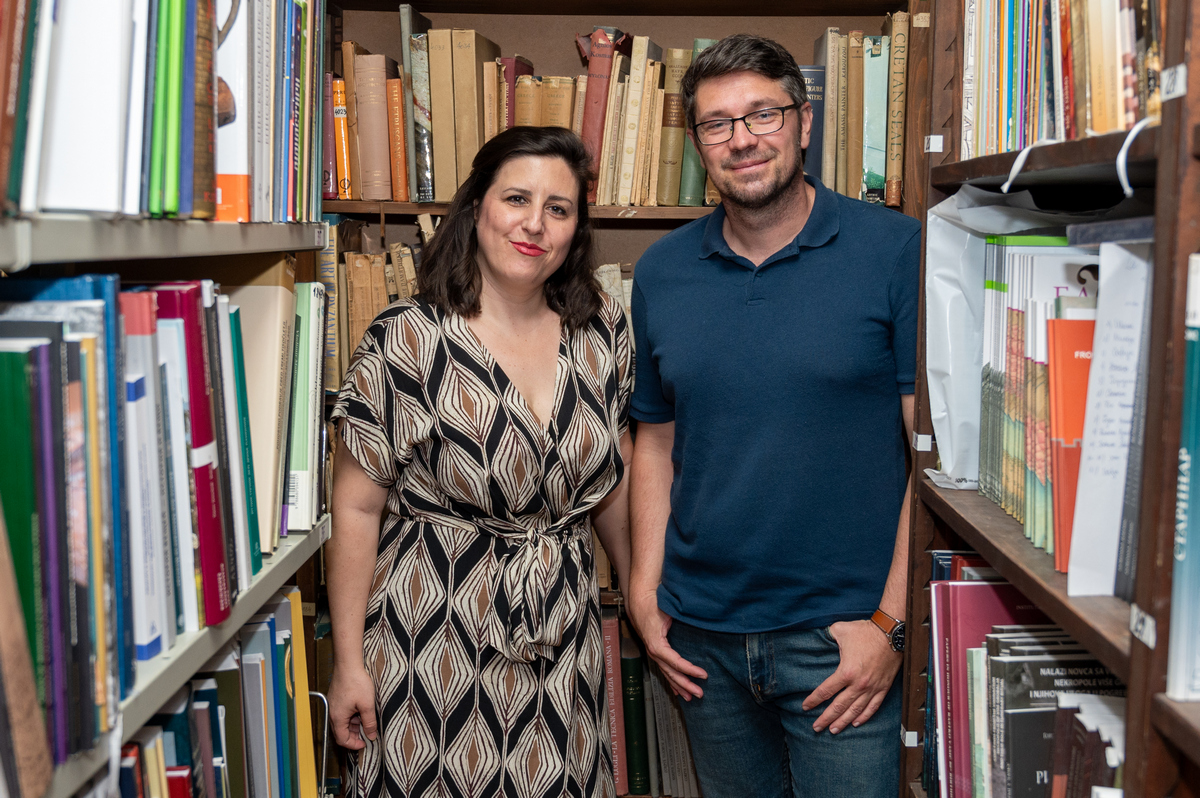Project Title
Mortar Design for Conservation – Danube Roman Frontier 2000 Years After
Article Author and Principal Investigator of the Project
Dr. Emilija Nikolić
Research Associate, Institute of Archaeology, Belgrade

Mortar is generally seen as a common technological construction product with an established production process and selection of components, given the dominance of cement mortars that are quickly prepared and applied. However, the study of mortar is deeply related to other materials and their life cycle, the exploitation of raw materials, their processing and use as masonry elements or mortar components. The results of the examination of historical mortars that had different functions in a building or were incorporated in its different phases can reveal information about its creation and use. The research of historical mortars and other building materials and technologies is important for modern construction because it can provide information for the development of new industrial solutions. Finally, conservation of monuments is one of the most important applications of historical mortar research.
The Mortar Design for Conservation – Danube Roman Frontier 2000 Years After (MoDeCo2000) project was implemented with the support of the Science Fund of the Republic of Serbia from 2020 to 2022, within the PROMIS programme. The project entails a unique multidisciplinary scientific research of historical lime mortars that come from a wider territory and a period of several centuries in Serbia. An examination of the lime mortars used from the 1st to the 6th century AD for the construction of buildings that are part of 21 archaeological sites in Serbia, located along the Danube River, which are also included in the Tentative list of the UNESCO World Heritage of the Frontiers of the Roman Empire – Danube Limes in Serbia, was carried out. Based on the research, compatible models of conservation mortars were prepared using local raw materials and their successful use was further validated during experimental application using traditional technologies on newly formed and authentic masonry structures.
Locally available natural materials have always been the basis for the development of all human activities, including construction. The applied building and masonry techniques, as well as the design in architecture, depended on them. In Roman construction, it was precisely the development of one material, the so-called Roman concrete in today’s Italy that led to a construction revolution and erection of the buildings with structures that reached monumental spans. This material is based on the use of hyDr.aulic mortar, which was further based on local raw materials, i.e. volcanic products with properties that enable the formation of compounds that increase the durability and strength of the mortar and ensure that it sets and hardens under water. It is precisely the buildings that were created using Roman concrete, which have been preserved to this day, that are the most common topics for researchers of Roman architecture. The construction activities that developed in the part of the Roman Empire that included the territory of today’s Serbia, where raw materials of volcanic origin with properties similar to those in Italy were not available for builders, were somehow neglected. Precisely because of this, the research of ways to achieve durability in the mortar of provincial buildings and the selection of components for the preparation of durable and compatible mortars for their conservation was a great challenge. The investigation of the properties and composition of the most durable mortar that was sampled through the MoDeCo2000 project, led to valuable insights. These findings can be crucial for future research on all historical mortars that were used in the present-day territory of Serbia.
The life span and durability of buildings throughout history often depended on the composition of the mortar and its application. It is a similar situation today when we try to protect those buildings because the choice of mortar for conservation is one of the most important factors in their preservation. The application of mortars incompatible with the historically used ones or with the surrounding masonry elements can cause damage to the historical fabric and in the worst cases, jeopardize the stability of the building. Therefore, in the process of technical protection of buildings, there has to be constant cooperation between researchers, conservators and craftsmen. Preservation of masonry craft and traditional mortar preparation technologies was one of the important topics of the MoDeCo2000 project, promoted through a practical workshop and a scientific conference. Given the fact there is no specialized education for architectural conservators in the Serbian education system and that working in the technical protection of monuments carries great challenges, it is extremely important that the young generation of architects and other engineers acquire knowledge during their education that will enable them to be confident and secure in their decisions during conservation, where nowadays, as in most areas of human activity in the world, economic gain is becoming increasingly important and is often the sole goal. During the MoDeCo2000 project, our team worked with students from multiple fields to familiarize them with the characteristics of historical mortars and the preparation of compatible models for conservation.
The methodology of characterizing, i.e. determining the composition of historical lime mortars and preparing mortar models for conservation during the MoDeCo2000 project was done following international standards and recommendations, based on the experience of the project team members and adapted to the needs of architectural conservation in Serbia. This can be applied to the examination of all types of historical mortars, as well as the preparation and application of mortars for the conservation of all traditional buildings. With the help of the methodology and project results, it will be easier to make decisions about the preparation and use of mortar during the conservation of buildings in Serbia, while the experiences gained during the project can be an important contribution to the nomination file for the inclusion of the Danube Limes in Serbia on the UNESCO World Heritage List.
The implementation of the MoDeCo2000 project, which was financed by the Science Fund, included working both in laboratories and the field, procurement of modern laboratory and field equipment to obtain research results, planning international projects in which its use will be of crucial importance, establishing new and boosting existing connections with global researchers, participation of team members in numerous international conferences, the organization of important workshops, publication of results in international journals and different types of project promotion. By working together, project team members from the fields of archaeology, architecture, geology, chemistry, and material engineering proved the value of interdisciplinarity in science, adding to their existing knowledge and looking at problems through the filter of several different scientific fields.
Trying to respond to modern human needs, the construction industry produces a huge amount of construction materials as well as waste, thus increasing pollution. During the fight against climate change, scientists are trying to improve existing, but also develop new, sustainable building materials. Research of historical mortars, as indicated by the latest results of the world scientists’ search for ways to improve the properties of modern building materials based on the durability of Roman mortars, can make a valuable contribution to this process. We hope that future research on historical mortars in Serbia – through the development of the MoDeCo2000 project in cooperation with the industry or the launch of a new scientific project – will be able to provide a similar contribution to this extremely important topic.
Program:
The Program for Excellent Projects of Young Researchers – PROMIS
Project Budget:
EUR 199,657
Scientific and Research organizations:
- Institute of Archaeology, Belgrade
- Faculty of Technology, University of Novi Sad, Novi Sad
- Institute for Testing of Materials, Belgrade
Project Team Members:
- Dr. Mladen Jovičić, Research Associate, Institute of Archaeology, Belgrade
- Dr. Snežana Vučetić, Associate Professor, Faculty of Technology, University of Novi Sad, Novi Sad
- Dr. Jonjaua Ranogajec, Full Professor, Faculty of Technology, University of Novi Sad, Novi Sad
- Ljiljana Miličić, Principal Research Fellow, Institute for Testing of Materials, Belgrade
- Ivana Delić-Nikolić, Research Associate, Institute for Testing of Materials, Belgrade
- Dr. Nevenka Mijatović, Research Associate, Institute for Testing of Materials, Belgrade
- Dr. Biljana Ilić, Senior Research Associate, Institute for Testing of Materials, Belgrade
